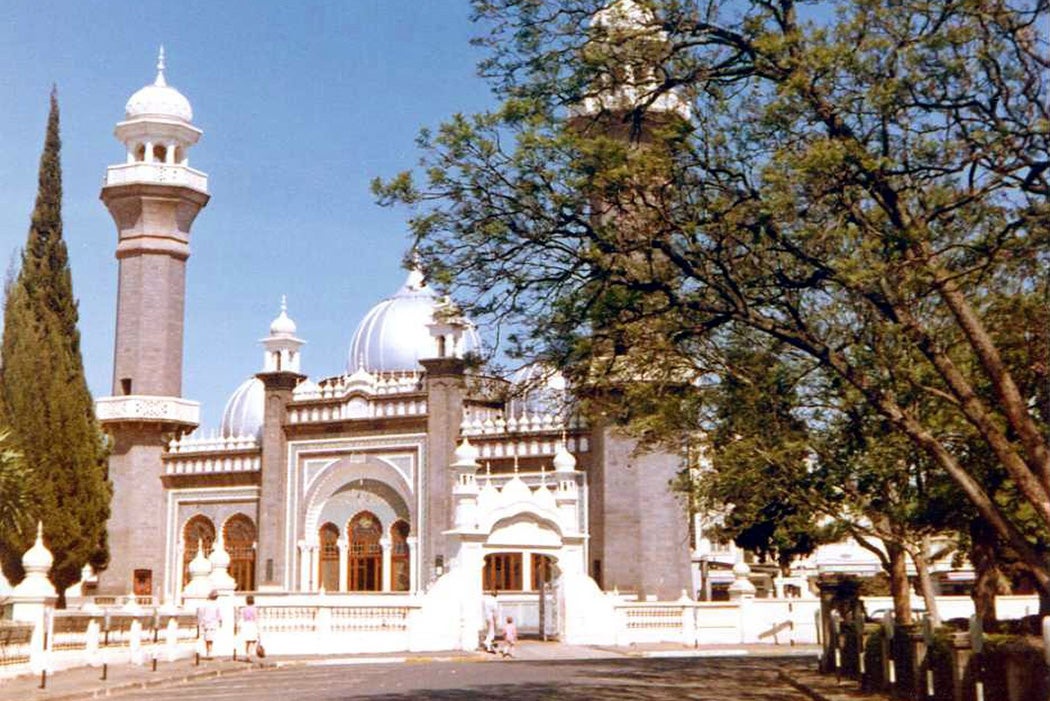The Jamia Masjid in Nairobi is an impressive sight. Located in the central business district of the bustling city, the mosque boasts striking domes and minarets that might call to mind the Taj Mahal. As art historian Steven Nelson writes, the story of how the building was designed that way offers a window into the complicated cultural exchanges within the British Empire.
While travelers and traders had long linked the Indian subcontinent and East Africa, Nelson writes, a new influx of South Asians arrived in Kenya when the British colonial government began construction of the Uganda Railway at the end of the nineteenth century. Between 1895 and 1901, almost 32,000 Indians—almost all men, largely Muslims from the Punjab region—traveled to Africa to work on the project. It was brutal work, and nearly 2,500 of them died during that time. Most who survived returned to India, but around 6,700 stayed.
The railroad project also brought the establishment of the brand-new city of Nairobi, which became the capital of British East Africa and a hub for the Punjabi community. By 1909, there were more than 3,000 Indians in Nairobi, far more than the number of Europeans in the city.
From the beginning, Indian Muslims in East Africa built mosques for themselves. The first were temporary structures assembled with corrugated iron sheets that the British used in the railroad project.
In Nairobi, Nelson writes, they began building more permanent houses of worship. Among the patrons of these projects was Aga Khan III, a Karachi-born leader in the fight for Muslim rights within the British empire. In line with his desire to help Muslims fit into a modern, cosmopolitan world, in the early 1920s he commissioned what would become the Khoja Mosque, a squat, three-story building with a Victorian-style clock tower that observers have compared with a British bank.
Just a few years later, though, the Aga Khan helped finance a very different project. A group called the Anjuman Islamia was working to create an impressive Islamic building not just to serve their own Punjabi community but also to spread the religion and engage with Muslims of all backgrounds, offering services in Urdu, Arabic, and Swahili. Members of the Anjuman Islamia traveled in East Africa and India, securing donations large and small from more than 1,500 Punjabi, Arab, and African individuals and businesses.
Nelson writes that the Anjuman Islamia hired William Landels, a Scottish architect, to design the building. It was inspired by sixteenth- and seventeenth-century Indian buildings built under the Mughal Empire. Yet Landels also drew on a variety of other traditions. Instead of white marble, the mosque’s bulbous domes were formed from steel and copper shipped from London, while its multicolor brick suggests the Templeton Carpet building built in Glasgow in 1892.
Over the years, the mosque was expanded at least twice. Today it may be the largest in East Africa, serving a mostly African congregation. Yet its design remains a reminder of the complicated history of life under British colonial rule.
Support JSTOR Daily! Join our membership program on Patreon today.







